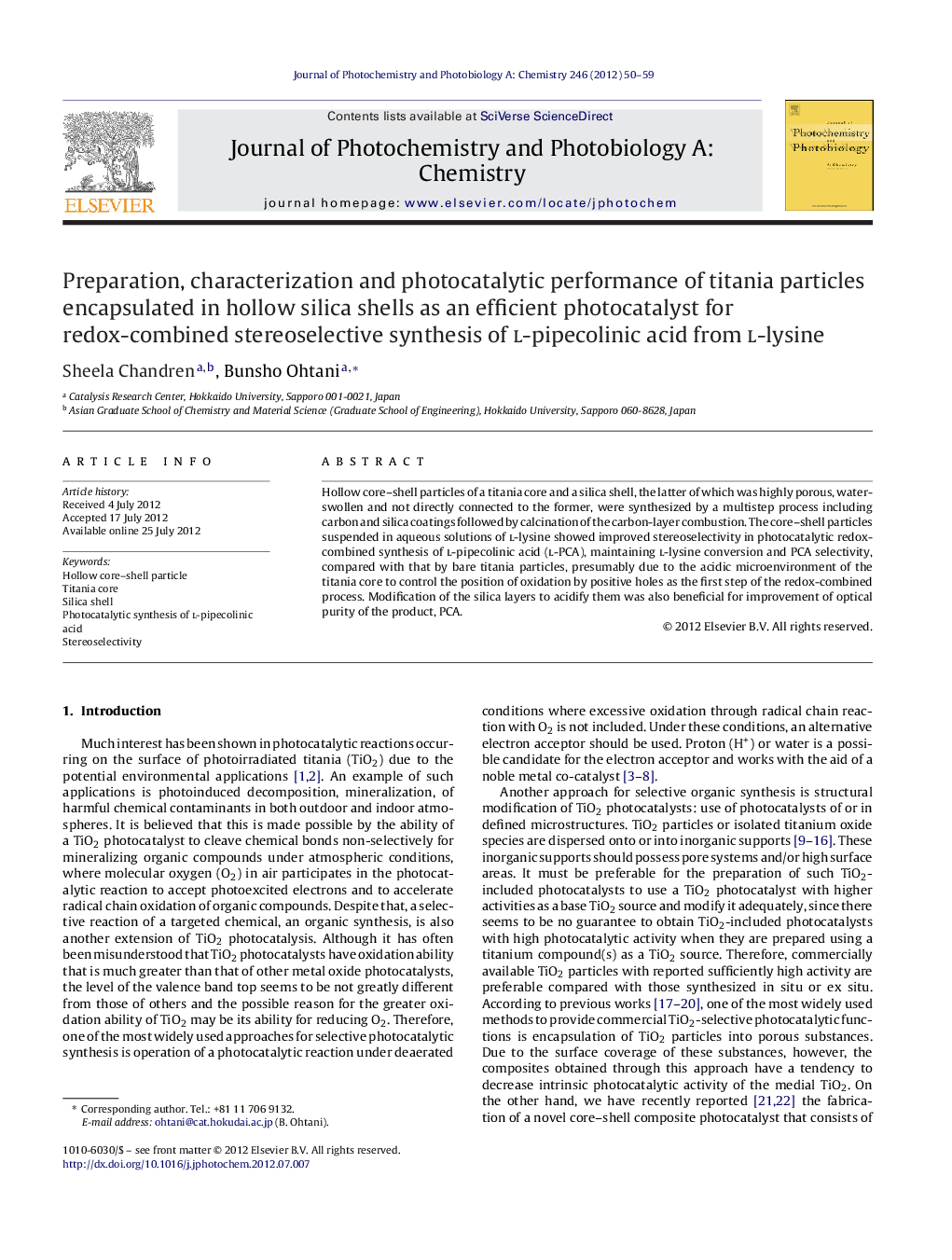| کد مقاله | کد نشریه | سال انتشار | مقاله انگلیسی | نسخه تمام متن |
|---|---|---|---|---|
| 26873 | 43983 | 2012 | 10 صفحه PDF | دانلود رایگان |

Hollow core–shell particles of a titania core and a silica shell, the latter of which was highly porous, water-swollen and not directly connected to the former, were synthesized by a multistep process including carbon and silica coatings followed by calcination of the carbon-layer combustion. The core–shell particles suspended in aqueous solutions of l-lysine showed improved stereoselectivity in photocatalytic redox-combined synthesis of l-pipecolinic acid (l-PCA), maintaining l-lysine conversion and PCA selectivity, compared with that by bare titania particles, presumably due to the acidic microenvironment of the titania core to control the position of oxidation by positive holes as the first step of the redox-combined process. Modification of the silica layers to acidify them was also beneficial for improvement of optical purity of the product, PCA.
Platinized titania particles encapsulated in hollow silica shells were prepared as an efficient photocatalyst for redox-combined stereoselective synthesis of l-pipecolinic acid from l-lysine.Figure optionsDownload as PowerPoint slideHighlights
► Hollow (titania) core–(silica) shell particles were prepared successfully.
► They showed good performance in photocatalytic l-pipecolinic acid synthesis.
► Optical purity of l-pipecolinic acid was highly improved compared with bare titania.
► Microenvironment induced by swollen silica shell was beneficial.
Journal: Journal of Photochemistry and Photobiology A: Chemistry - Volume 246, 15 October 2012, Pages 50–59